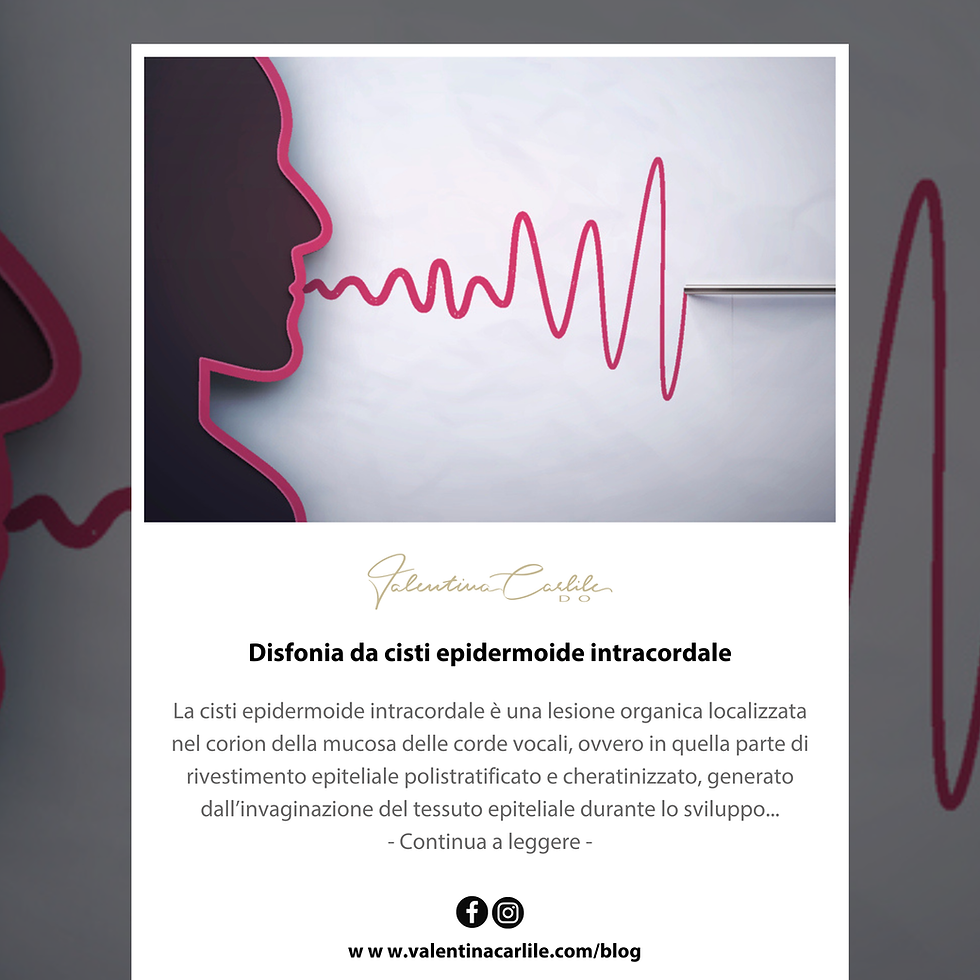Osteopathic treatment and voice mutation
- Valentina Carlile DO

- Aug 26
- 2 min read

In general, voice mutation-related dysphonia is due to a psychological phenomenon of momentary rejection of the new situation of growth and voice change, further favored by the instability of vocal production.
It may happen that a male undergoing voice mutation retains a high-pitched voice, starting to phonate in falsetto instead of using the modal register. In order to maintain the falsetto, an imbalance is created between the contractile action of the thyroarytenoid and cricothyroid muscles, with a resulting elevation of the larynx during phonation. Even if the morphological characteristics of the larynx correspond to the person’s chronological age, the voice remains too high-pitched.
The gold-standard treatment is speech therapy, aimed at lowering the pitch of the voice and reducing it until the laryngeal tension is eliminated to allow the larynx to drop lower in the neck. This is precisely where the collaboration with the osteopath comes into play. During growth and the lengthening of functional chains, it is beneficial to monitor the distribution of tension and tissue forces, also facilitating their maturational direction by addressing both local and long-range somatic dysfunctions. Specifically, it is helpful to assist the patient in assimilating vibratory feedback during descending pitch exercises, monitor contractions during glottic attacks, use the laryngeal manipulation protocol during vocal production and swallowing, and track the coordination of the speech articulatory organs.
Vocal guidance should be part of voice therapy, as its goal is to provide the patient with basic knowledge of anatomy, physiology, and human development, so they understand what is happening to them. They should also be educated on vocal hygiene and the elimination of harmful vocal habits, especially those exacerbated during this phase of maturation.
Valentina Carlile - Osteopath specializing in Osteopathy for Voice and Speech Disorders since 2002. For information and bookings, visit the Contact page.





Comments